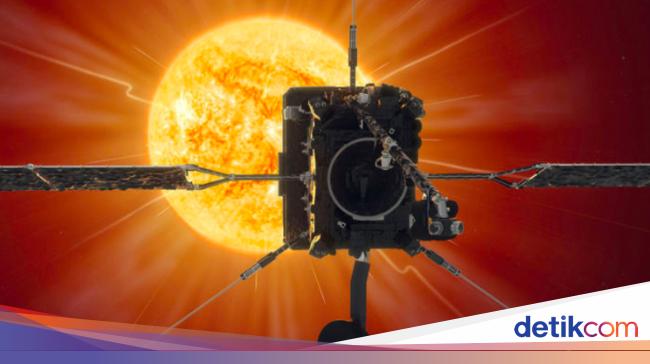Jakarta –
Mission Solar Orbiter who studied the Sun managed to record explosive activity Sun for the first time. In fact, the first video recording the explosion of the Sun was obtained before the official Solar Orbiter science mission began.
Solar Orbiter, a mission jointly carried out by the European Space Agency (ESA) and NASA, was launched in February 2020 and has already made the first two close-up approaches to our Sun, the last time on 10 February.
Scientists are still digging into that data before the spacecraft begins its formal science work in November this year. However, they saw something special when they approached the Sun last February. They witnessed the two coronal mass shedding that occurs when Sun spat out a large mass of its atmosphere into space.
Quoted from Space.com, at that time spacecraft distances allowed Solar Orbiter can see parts of the Sun that are completely invisible to scientists on Earth. However, it also means that sending data back to Earth is a very slow process. Scientists are still digging into what the spacecraft saw.
The ejection of the coronal mass will be the first event observed by the Solar Orbiter Heliospheric Imager (SoloHI) instrument, which filmed a stream of material exploding from the Sun. The instrument only collects data by chance.
“SoloHI was able to capture the most astonishing view of one of the coronal mass ejections that occurred on February 12 and February 13. Each of the three instruments on the Solar Orbiter focused on a different area, so the view stretched from the visible surface of the Sun to over 20 times the width of the Sun itself, “said the ESA.
Meanwhile, three other spacecraft: NASA’s STEREO-A, ESA’s Proba-2, and the joint Solar and Heliospheric Observatory (SOHO) mission observed the same event. Overall, the four mission’s observations of coronal mass shedding offer the sort of global perspective on the Sun and its surroundings that scientists have been difficult to find so far.
The ejection of the coronal mass is of interest to scientists and engineers because it can potentially damage spacecraft and endanger unprotected astronauts, especially outside the orbit of the International Space Station (ISS).
So far, scientists have limited ability to monitor and predict space weather. Therefore, missions such as the Solar Orbiter are expected to increase researchers’ understanding of how this works Sun.
Unique contribution Solar Orbiter the other in the quest is its tilted orbit. This allowed scientists to describe the sun’s poles for the first time. The following is a video recording of the Sun when it releases an eruption.
(rns/rns)
– .


